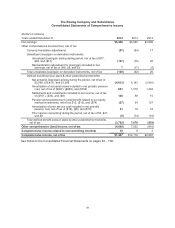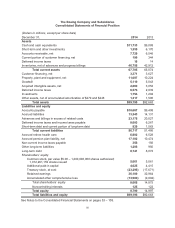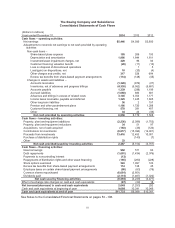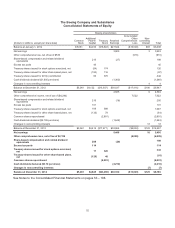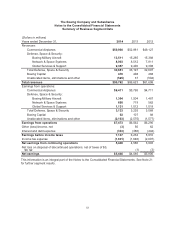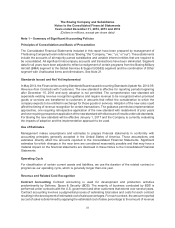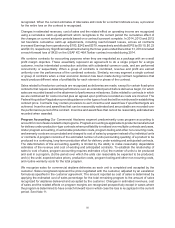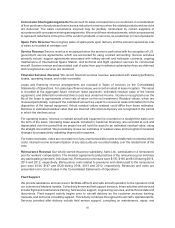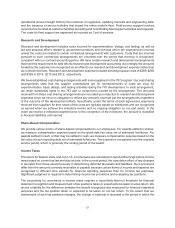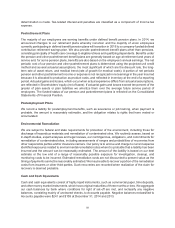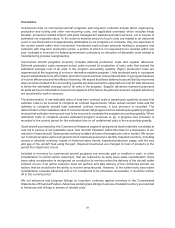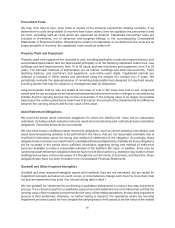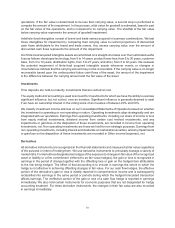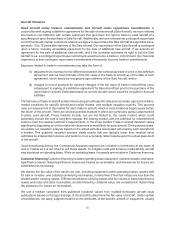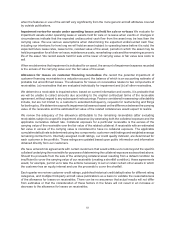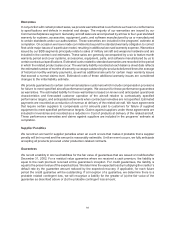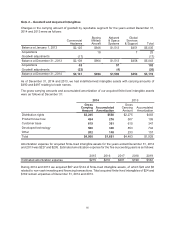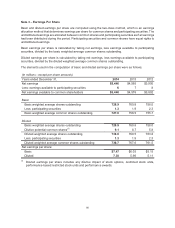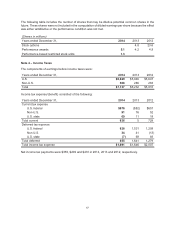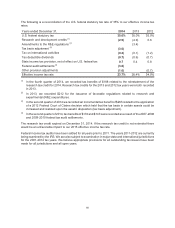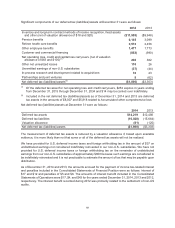Boeing 2014 Annual Report Download - page 71
Download and view the complete annual report
Please find page 71 of the 2014 Boeing annual report below. You can navigate through the pages in the report by either clicking on the pages listed below, or by using the keyword search tool below to find specific information within the annual report.59
Inventories
Inventoried costs on commercial aircraft programs and long-term contracts include direct engineering,
production and tooling and other non-recurring costs, and applicable overhead, which includes fringe
benefits, production related indirect and plant management salaries and plant services, not in excess of
estimated net realizable value. To the extent a material amount of such costs are related to an abnormal
event or are fixed costs not appropriately attributable to our programs or contracts, they are expensed in
the current period rather than inventoried. Inventoried costs include amounts relating to programs and
contracts with long-term production cycles, a portion of which is not expected to be realized within one
year. Included in inventory for federal government contracts is an allocation of allowable costs related to
manufacturing process reengineering.
Commercial aircraft programs inventory includes deferred production costs and supplier advances.
Deferred production costs represent actual costs incurred for production of early units that exceed the
estimated average cost of all units in the program accounting quantity. Higher production costs are
experienced at the beginning of a new or derivative airplane program. Units produced early in a program
require substantially more effort (labor and other resources) than units produced later in a program because
of volume efficiencies and the effects of learning. We expect that these deferred costs will be fully recovered
when all units included in the accounting quantity are delivered as the expected unit cost for later deliveries
is below the estimated average cost of all units in the program. Supplier advances represent payments
for parts we have contracted to receive from suppliers in the future. As parts are received, supplier advances
are amortized to work in process.
The determination of net realizable value of long-term contract costs is based upon quarterly reviews that
estimate costs to be incurred to complete all contract requirements. When actual contract costs and the
estimate to complete exceed total estimated contract revenues, a loss provision is recorded. The
determination of net realizable value of commercial aircraft program costs is based upon quarterly program
reviews that estimate revenue and cost to be incurred to complete the program accounting quantity. When
estimated costs to complete exceed estimated program revenues to go, a program loss provision is
recorded in the current period for the estimated loss on all undelivered units in the accounting quantity.
Used aircraft purchased by the Commercial Airplanes segment and general stock materials are stated at
cost not in excess of net realizable value. See ‘Aircraft Valuation’ within this Note for a discussion of our
valuation of used aircraft. Spare parts inventory is stated at lower of average unit cost or market. We review
our commercial spare parts and general stock materials quarterly to identify impaired inventory, including
excess or obsolete inventory, based on historical sales trends, expected production usage, and the size
and age of the aircraft fleet using the part. Impaired inventories are charged to Cost of products in the
period the impairment occurs.
Included in inventory for commercial aircraft programs are amounts paid or credited in cash, or other
consideration to certain airline customers, that are referred to as early issue sales consideration. Early
issue sales consideration is recognized as a reduction to revenue when the delivery of the aircraft under
contract occurs. If an airline customer does not perform and take delivery of the contracted aircraft, we
believe that we would have the ability to recover amounts paid. However, to the extent early issue sales
consideration exceeds advances and is not considered to be otherwise recoverable, it would be written
off in the current period.
We net advances and progress billings on long-term contracts against inventory in the Consolidated
Statements of Financial Position. Advances and progress billings in excess of related inventory are reported
in Advances and billings in excess of related costs.


